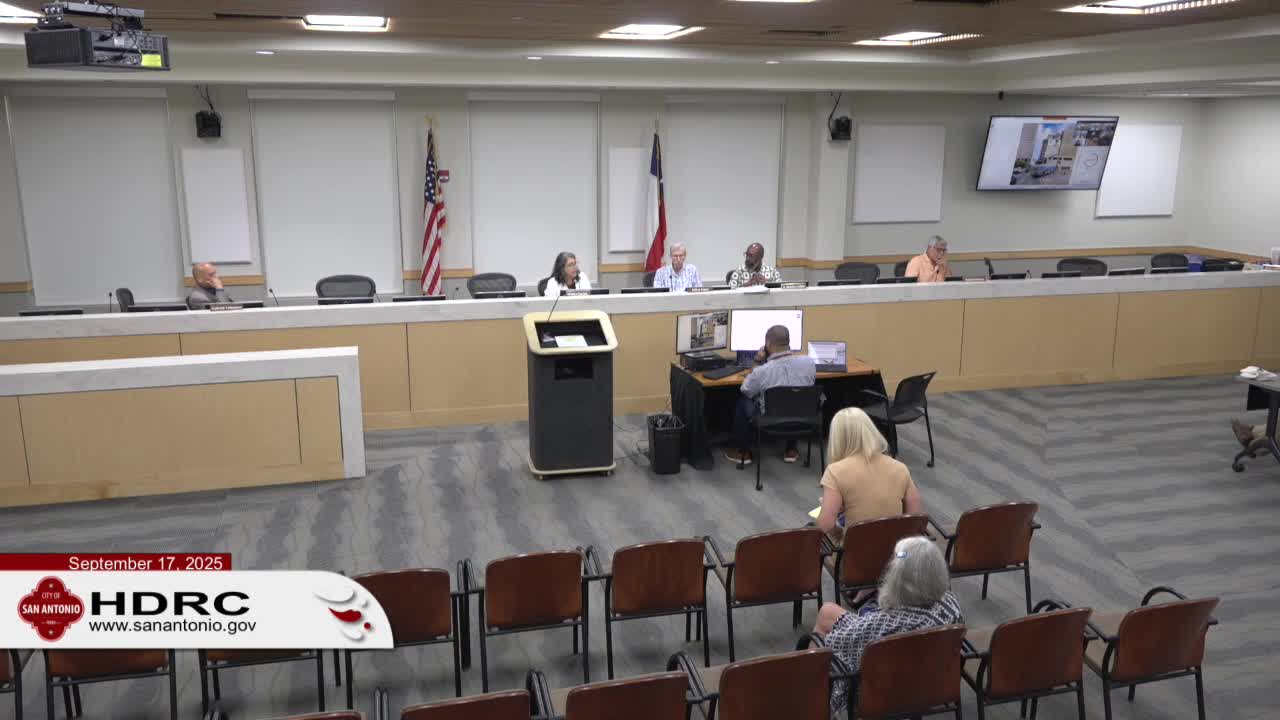City Council Discusses Digital Media Ordinance at Historic Landmark Property
September 17, 2025 | San Antonio, Bexar County, Texas
This article was created by AI summarizing key points discussed. AI makes mistakes, so for full details and context, please refer to the video of the full meeting. Please report any errors so we can fix them. Report an error »

In a recent meeting of the San Antonio Historic and Design Review Commission, a pivotal discussion unfolded regarding the landmark status of a property that has sparked interest among local officials and residents alike. The atmosphere was charged with anticipation as members sought clarity on the implications of the ordinance governing signage on historic buildings.
Corey, a key figure in the discussion, was asked to confirm the landmark status of the property in question. The conversation quickly turned to the ordinance, which states that signs may not be placed on historic buildings. However, the property under review is classified as an individual historic landmark, leading to a nuanced interpretation of the rules.
The commission recommended that signage could be permissible because it is not directly attached to the historic building itself. This interpretation hinges on the fact that the addition in question was constructed after the original building but before its designation as a landmark over 25 years ago. This timeline raises important questions about how properties are evaluated within historic districts.
As the discussion progressed, it became clear that the commission's stance is that the addition should be considered a contributing element to the historic property unless proven otherwise. This perspective reflects a broader commitment to preserving the integrity of San Antonio's rich architectural heritage while navigating the complexities of modern development.
The meeting underscored the delicate balance between honoring historical significance and accommodating contemporary needs. As San Antonio continues to grow, the decisions made by the Historic and Design Review Commission will play a crucial role in shaping the city's landscape, ensuring that its past is respected even as it embraces the future.
Corey, a key figure in the discussion, was asked to confirm the landmark status of the property in question. The conversation quickly turned to the ordinance, which states that signs may not be placed on historic buildings. However, the property under review is classified as an individual historic landmark, leading to a nuanced interpretation of the rules.
The commission recommended that signage could be permissible because it is not directly attached to the historic building itself. This interpretation hinges on the fact that the addition in question was constructed after the original building but before its designation as a landmark over 25 years ago. This timeline raises important questions about how properties are evaluated within historic districts.
As the discussion progressed, it became clear that the commission's stance is that the addition should be considered a contributing element to the historic property unless proven otherwise. This perspective reflects a broader commitment to preserving the integrity of San Antonio's rich architectural heritage while navigating the complexities of modern development.
The meeting underscored the delicate balance between honoring historical significance and accommodating contemporary needs. As San Antonio continues to grow, the decisions made by the Historic and Design Review Commission will play a crucial role in shaping the city's landscape, ensuring that its past is respected even as it embraces the future.
View full meeting
This article is based on a recent meeting—watch the full video and explore the complete transcript for deeper insights into the discussion.
View full meeting
